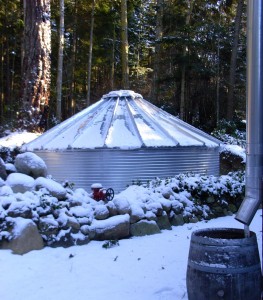 Rainwater collection is becoming increasingly popular, driven by centralized water and sewer systems unable to meet demands, incentive programs offering rebates (much like solar), water quality, availability, and cost increases from our municipal sources.
Rainwater collection is becoming increasingly popular, driven by centralized water and sewer systems unable to meet demands, incentive programs offering rebates (much like solar), water quality, availability, and cost increases from our municipal sources.
Decentralized water systems design and implementation need to be regulated for public safety. ARCSA (American Rainwater Catchment Systems Association) has helped to write code, along with ASPE (American Society of Plumbing Engineers) and ANSI (American National Standards Institute) to insure that strict guidelines are met.
RainBank Rainwater Collection Systems recommends that when hiring a designer or contractor for your rainwater harvesting system, ask if they are an ARCSA accredited or certified professional. Members have been trained and are required to have continuing education in order to provide a SAFE source of water. Be sure the designer has experience in the field of water systems and that your contractor has knowledge and experience in 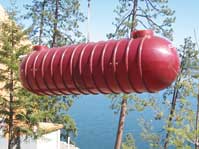 installation.
installation.
A well designed and installed potable system will provide your household with quality, safe, and reliable water for years to come. Non potable systems also need to be designed with use in mind. Proper sizing and components will be essential in the system’s performance.

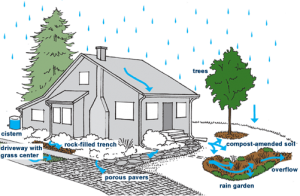 The City of Seattle, through Seattle Public Utilities, has been offering incentives in the way of rebates for rainwater collection since 2010. The
The City of Seattle, through Seattle Public Utilities, has been offering incentives in the way of rebates for rainwater collection since 2010. The 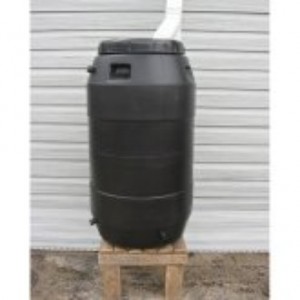 The price range of rainwater collection is as wide as there are different designs. A rainwater collection system can be as simple and as inexpensive as a rain barrel with a single downspout collecting from a small amount of roof. Generally a homeowner can purchase and install the components for this type of introductory system. Small irrigation needs are the key here. Water usage can easily exceed storage.
The price range of rainwater collection is as wide as there are different designs. A rainwater collection system can be as simple and as inexpensive as a rain barrel with a single downspout collecting from a small amount of roof. Generally a homeowner can purchase and install the components for this type of introductory system. Small irrigation needs are the key here. Water usage can easily exceed storage.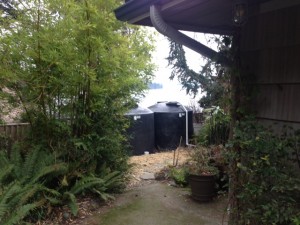 Having a system with multiple uses will help the system to be used more efficiently. If you want to irrigate, why not use the water that would normally overflow during the rainy season to supplement household usage such as toilet flushing and laundry facility? You have the water available in the summer for irrigating and during the rainy season, you’re getting use and reducing your water and septic bill. This type of design and use will help reduce the cost of your system by supplementing city water use.
Having a system with multiple uses will help the system to be used more efficiently. If you want to irrigate, why not use the water that would normally overflow during the rainy season to supplement household usage such as toilet flushing and laundry facility? You have the water available in the summer for irrigating and during the rainy season, you’re getting use and reducing your water and septic bill. This type of design and use will help reduce the cost of your system by supplementing city water use.